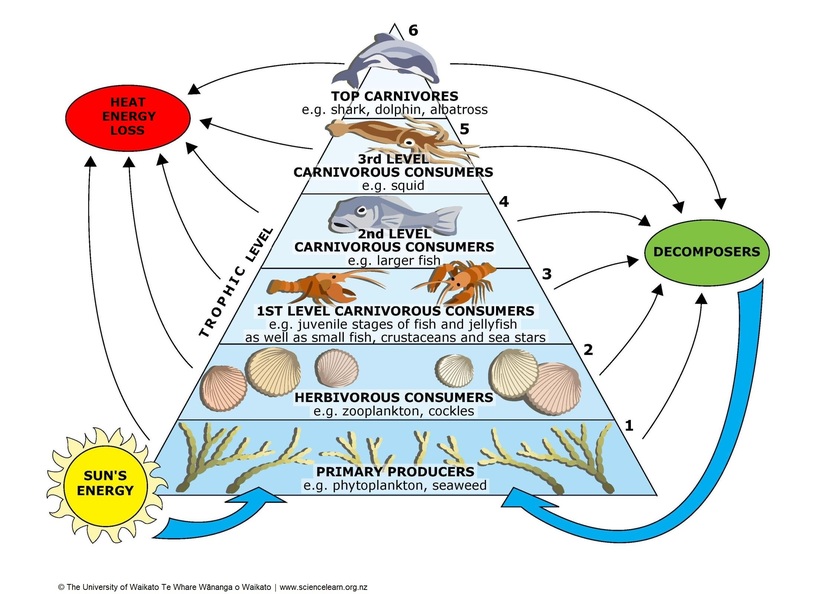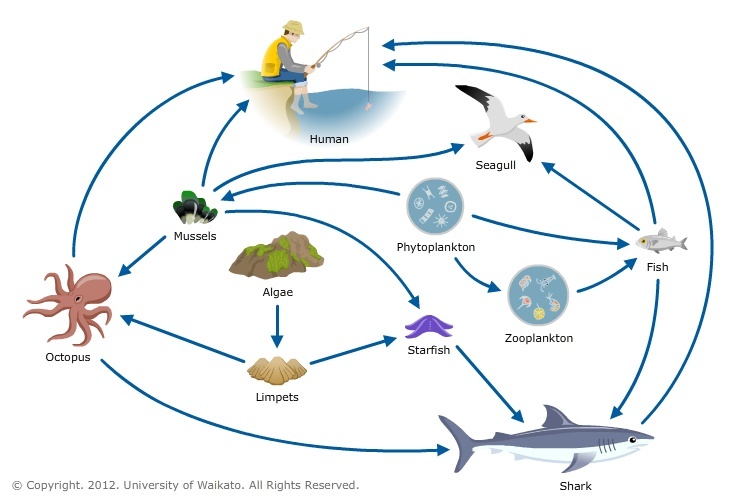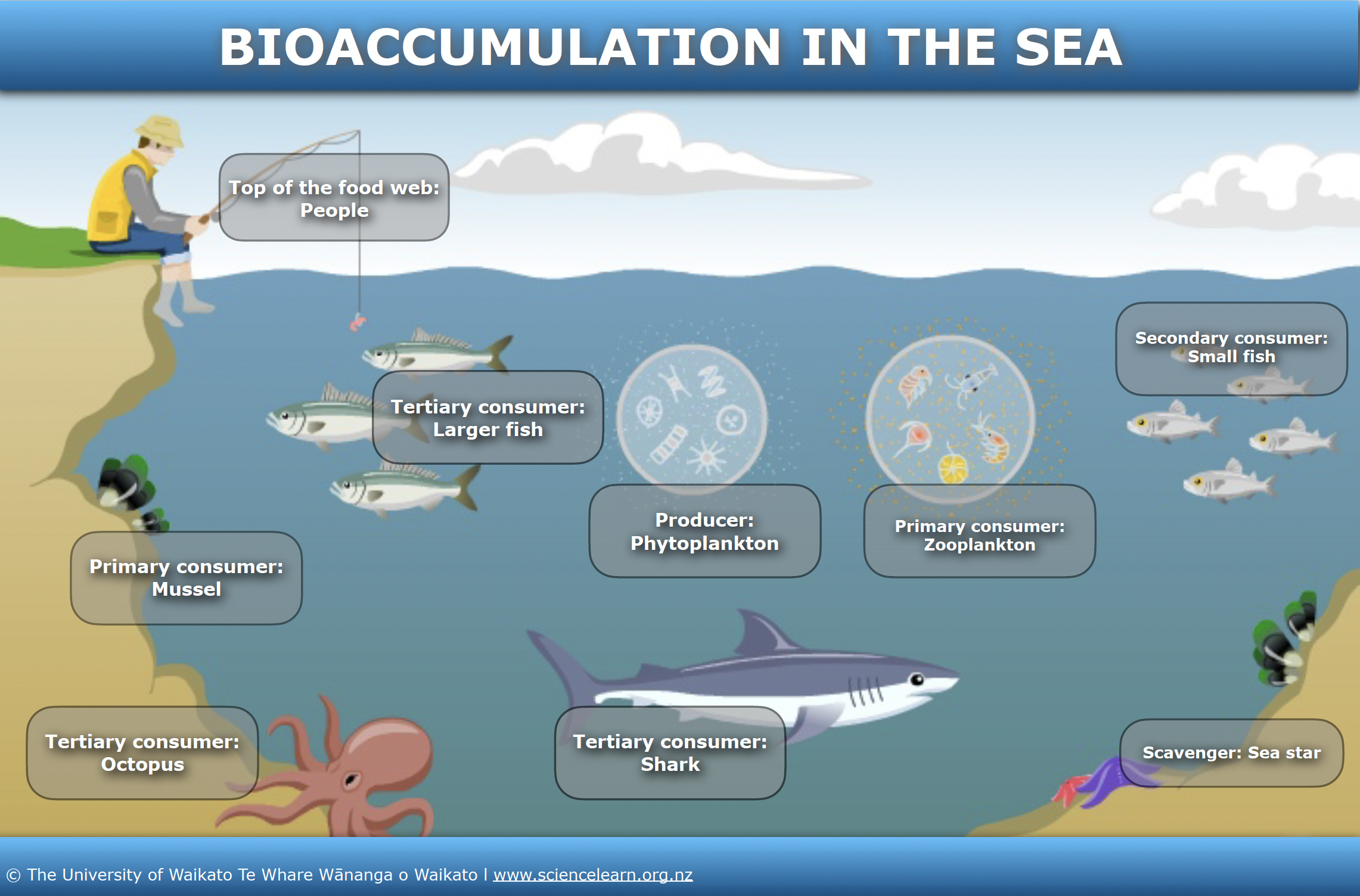All living things depend on one another to live. Animals eat plants and/or animals to survive. Food webs describe the feeding connections between organisms in an ecosystem. The three main groups in a food web are the producers, the consumers and the decomposers. The term food chain is used to describe a sequence of food consumers.
Producers
Plants are producers because they use light energy from the Sun to produce food (sugar) from carbon dioxide and water (a process called photosynthesis).
Consumers
Animals can’t make their own food so they eat (consume) either plants or other animals. The groups of consumers are:
- herbivores (or primary consumers) – eat only plants
- carnivores (or secondary consumers) – eat herbivores
- carnivores (or tertiary consumers) – eat other carnivores
- omnivores – eat animals and plants.
Decomposers
The decomposers such as bacteria and fungi break down (feed on) dead organisms, releasing minerals and nutrients back into the food web.
The interdependence of the populations within a food web helps to maintain the balance of plant and animal populations within a community. This interdependence is also how toxins can be moved through the food web.
Toxins and the marine food web
Hundreds of fish are sometimes found dead on beaches. Large numbers of shellfish can suddenly start to die off. People become seriously ill after eating certain shellfish. Deadly toxins are often found in these sick or dead organisms. Where have these toxins come from?
Marine toxin producers
Algae are plant-like organisms (producers) that make their own food by photosynthesis. They are life forms that usually float in water. They are the base of most food webs in the ocean and freshwater. Algae can range in size from extremely tiny microscopic organisms to giant seaweeds.
Very tiny phytoplankton cells (a type of microscopic algae) can produce potent toxins. Phytoplankton is eaten by zooplankton (tiny microscopic animals). The toxins don’t seem to harm these small creatures. Zooplankton live in swarms of billions of individual little animals and are eaten (along with phytoplankton) by many animals from tiny shrimp to the largest of mammals – the blue whale.
Bioaccumulation of marine toxins
Although the toxin produced by one phytoplankton cell is minuscule, it can accumulate quickly through the food web as each consumer takes in more and more of the toxin. This is called bioaccumulation. Bioaccumulation is the process by which compounds accumulate or build up in an organism at a rate faster than they can be broken down.
Organisms such as krill, mussels and fish have been found to retain toxins from phytoplankton in their bodies. These organisms are often not affected by the toxins but pass the toxins on further along the food web. The larger animals get the bigger doses of accumulated toxin. Some deaths of whales and sea lions have been attributed to this process. In many cases, toxins can be transported through the food web to humans, often through contaminated shellfish.
Effects of marine toxins on people
These toxins can affect people in different ways, from mild illness to death. There are several types of toxins produced by the harmful algae. Commonly, the toxins affect the functioning of nerve and muscle cells. Toxic blooms (sudden, large numbers of toxic algae) have been responsible for causing respiratory irritation and distress, diarrhoea, vomiting, numbness, dizziness, paralysis and death.
Related content
Mercury, in the form of methylmercury, is known to bioaccumulate in fish and shellfish.
Activity ideas
Use these activities below to further explore some of the science ideas and concepts raised in this article:
- Tracking toxins – students model bioaccumulation of toxins in marine animals. They participate in a food web game where feeding decisions determine their survival.
- Exploring small doses – explore small doses in the order of parts per million, students dilute food colouring to help them understand how small one part per million actually is.
Useful links
This website shows how specific toxins are moved through the food web, (note that this is an archive version).
An example of a 2019 health warning about toxic shellfish poisoning from the Ministry for Primary Industries (MPI).
Marine life may also accumulate toxic metals and chemicals caused through pollution. This news article is an example of high levels of heavy metal contamination may get incorporated into a food web.



